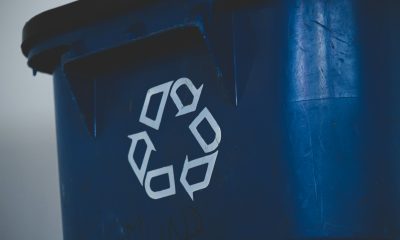Nước Đức
Mỏ lộ thiên Turów: Thành phố Zittau nộp đơn khiếu nại lên Ủy ban châu Âu về việc không tuân thủ luật pháp EU

Now, three months after the study was published, the city of Zittau is taking the next step and is filing a complaint with the European Commission. "We feel compelled to do so because we have not been treated correctly on the previous path of the environmental impact assessment," said Mayor Thomas Zenker. "We have the clear impression that the Polish authorities and the project sponsors deliberately do not take European law seriously."
Even with the knowledge of the importance of cross-border cooperation in the three-country region, the city council of the large district town of Zittau supports the mayor with this approach by a large majority. “It is very unfortunate that we have to do this with the Polish side. Some now fear that this may damage the good regional cooperation that has developed. But we see it differently: The basis for good cooperation are clear and shared rules. As Zittau city councilor and mayor, we have the duty and responsibility to look after the future of our city and region and its residents,” said Mayor Zenker.
The reasons for the path now being taken are serious: a whole series of original concerns about fine dust and noise have not been resolved, The concerns of the Saxon authorities regarding the groundwater issue, soil movements and the water quality of the Neisse have also not been resolved to this day. There is a lack of usable data. In addition, in October 2020, the findings from Dr. Croup. Today there is no clarity as to what concrete recultivation should take place after the opencast mine. From Zittau's point of view, there are still many unanswered questions while the excavators have long been running.
On March 20, 2020, the city of Zittau had already lodged an objection to the completely surprising approval of the Regional Director for Environment in Wroclaw to continue operating the Turòw opencast mine. Insofar as concerns of the city of Zittau have been taken into account in the proceedings, the measures specified are neither plausible nor appropriate and, in turn, lead to new environmental impacts that have not yet been considered. For example, the filling of an overburden dump of over 1000m in length and approx. 50m in height above the natural terrain along the Neisse appears completely inappropriate as a "noise protection measure".
The city of Zittau wants to achieve a new legal review of the open-cast mining permit, says Zenker: “We need the support of the European level: The situation must be clearly checked and assessed again and, on the other hand, the region and the people around Turów need a perspective when Poland finds itself in the current discussion on a clear exit scenario. That would be possible in the Just Transition Fund, but according to our information it is not yet planned for our neighboring region."
Tiểu sử
After the opposition to the plans to continue the open pit mine in March, the study by geologist Dr. habil. Ralf E. Krupp concluded that the mining work will pose considerable risks for the city of Zittau and the surrounding villages. In addition to the expected protracted exposure to acid mine water, there are above all groundwater subsidence, subsidence in the Zittau urban area of several centimeters and, in the worst case, a breakthrough of the Neisse river into the open-cast mining area in the developed paper.
Chia sẻ bài viết này:
-

 Ukraina4 ngày trước
Ukraina4 ngày trướcLiên minh tỷ phú: Ihor Kolomoisky, Bank Alliance & United Energy
-

 Nên kinh tê5 ngày trước
Nên kinh tê5 ngày trướcSố liệu người mua sắm xuyên biên giới của Tây Âu sẽ phá kỷ lục vào năm 2025
-

 ngân sách EU4 ngày trước
ngân sách EU4 ngày trước14 tỷ euro chi tiêu không thường xuyên của EU được báo cáo từ năm 2014 đến năm 2022
-

 Môi trường5 ngày trước
Môi trường5 ngày trướcBao bì bền vững có thể trì hoãn tác động của việc tạo ra chất thải ở châu Âu


























